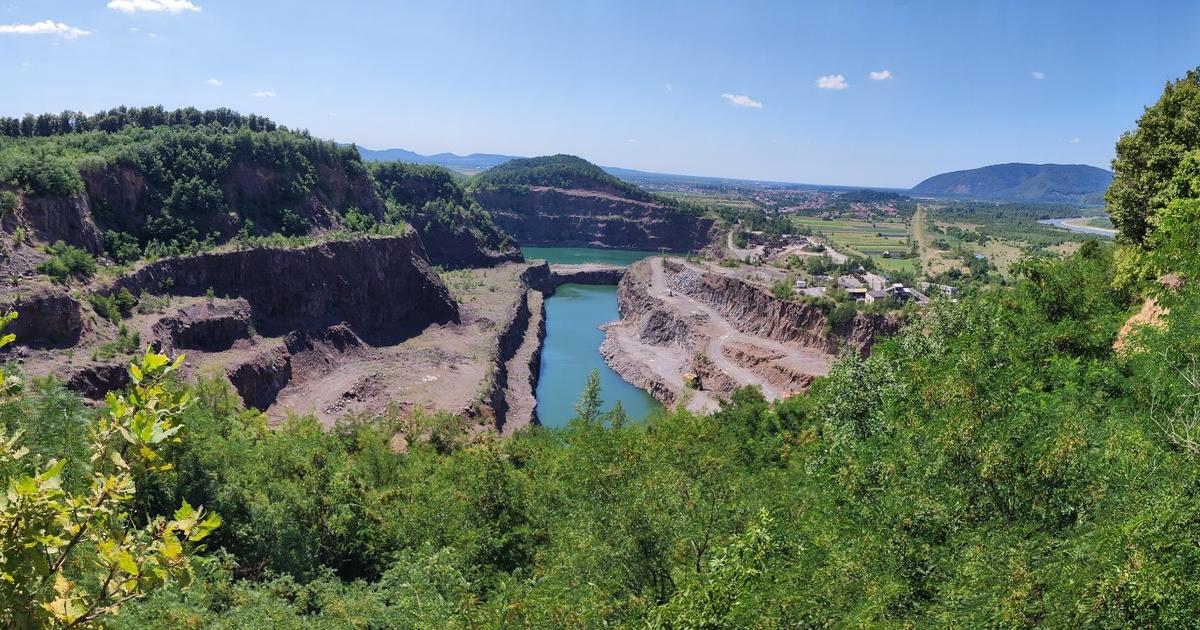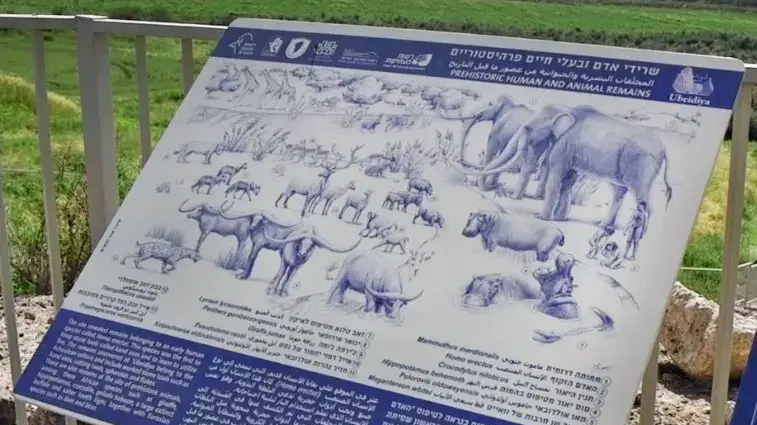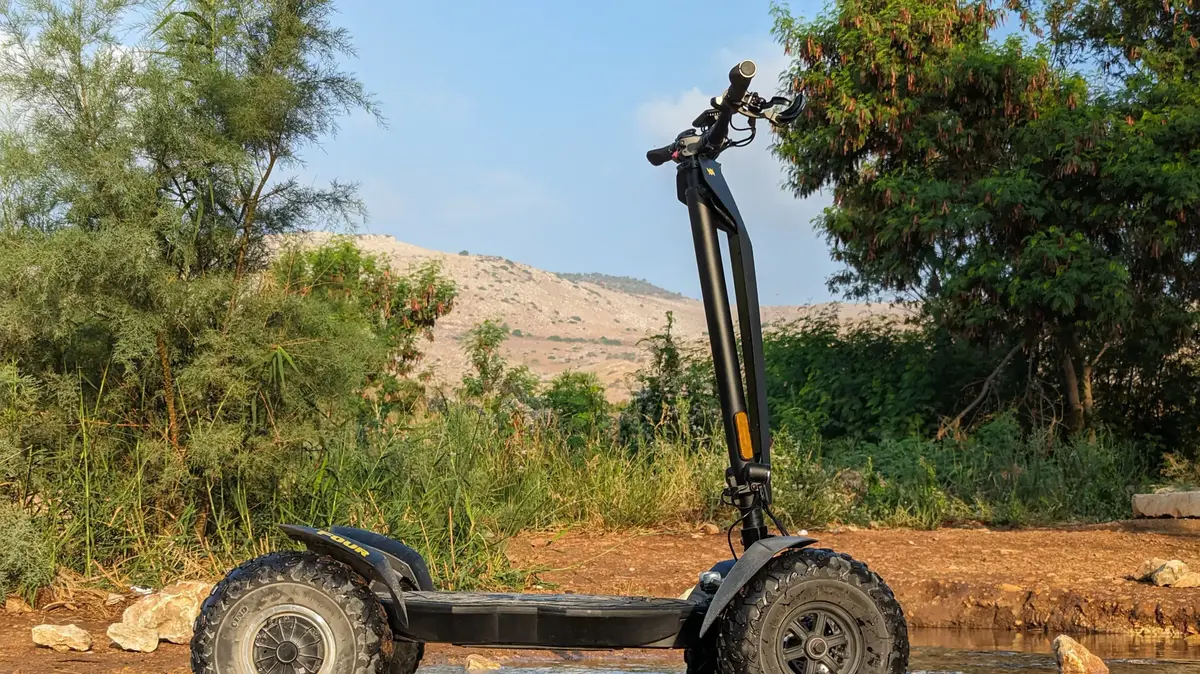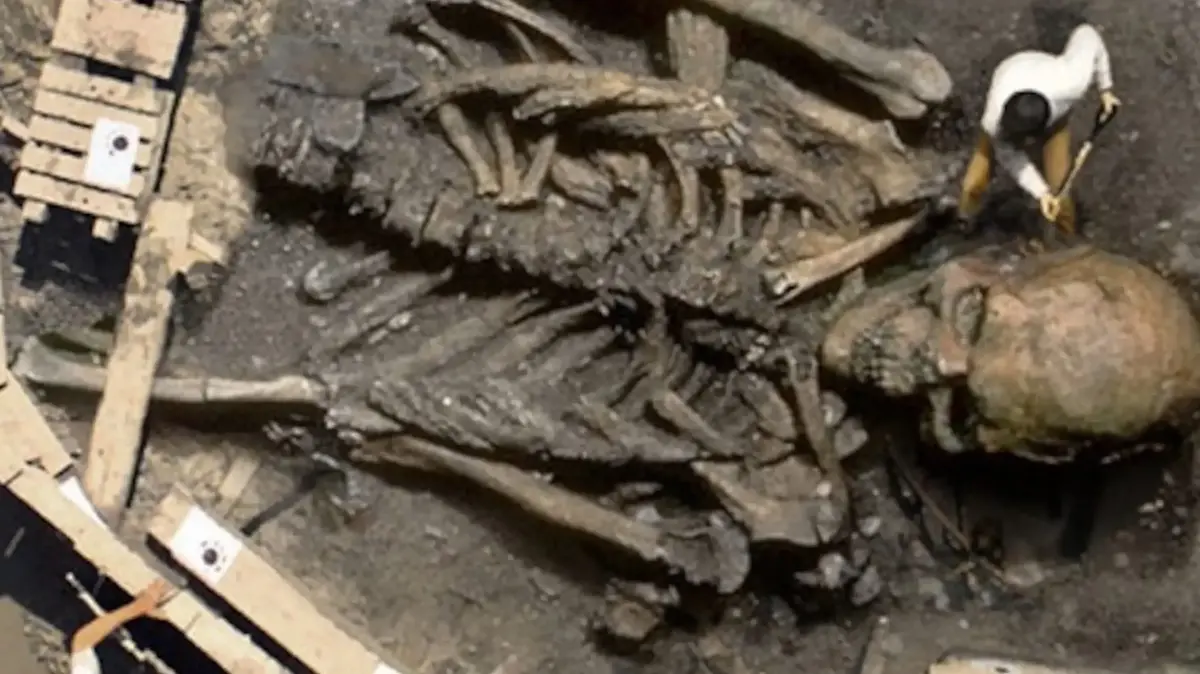Tourism
news
The earliest evidence for the use of stone tools for grinding was found by our ancestors
A pebble with signs of erosion that was used 350,000 years ago, was found in a cave in Carmel by researchers at the University of Haifa and predates the findings that were known until now about 150,000 years ago.
Researchers: "The tool has no parallel at such an early stage of human evolution, hence its global importance"
Tags
Archeology
Ziv Reinstein
Sunday, December 27, 2020, 9:00 p.m.
Share on Facebook
Share on WhatsApp
Share on general
Share on general
Share on Twitter
Share on Email
0 comments
A candle fragment with a seven-branched lamp model discovered in a house creates ...
Model in the pyramids in Egypt
The waterfall of the mill in Nahal Eyun
Dr. Amit Ram at the Mikveh HaTahara from the Second Temple period in the ...
A huge statue of a warrior engraved on a mountain
Israel establishes official relations with Bhutan 12.12.20
Netanyahu on the agreement with Morocco: "This is a great light for Israel ...
Quarter to Nature - Nature and Parks Authority - volunteers
What is the man watching on the flight?
An encounter between a diver and a hammerhead shark
Temporary photographers are allowed
(In the video: The jaw of the oldest human fossil, found in a cave in Carmel)
A new study published in the prestigious Journal of Human Evolution, identified the oldest tool to date, used for the erosion of various materials about 350,000 years ago, even before the advent of gay -Spain.
The vessel, a rounded dolomite robe with microscopic abrasion marks on it, is found in the Tabun Cave in Carmel - one of the flagship sites of prehistory in Israel and around the world - and is about 150,000 years ahead of any other vessel in the world that bears evidence of abrasion.
"The extraordinary discovery from Tabun Cave shows that hominins processed different materials through their erosion about 350,000 years ago, which means that at such an early stage a very significant technology was added to their 'toolbox' that teaches us that they could and wanted to process different materials in a variety of ways. And maximize the ways in which environmental resources were utilized, "said the study's editors, Dr. Ron Schimmelmitz, Dr. Iris Gruman-Yaroslavsky, Prof. Mina Weinstein-Evron and Prof. Danny Rosenberg, of the Zinman Institute of Archeology at the University of Haifa.
Tabun Cave, Part of the complex of sites that make up the UNESCO World Heritage Site in Nahal Maarot in Carmel, it is a unique site that has uncovered a sequence of archaeological strata that indicate hominin activity (human species, including ancient human species) in the last half million years and has been used for 90 years. To study human evolution.
The unique find was unveiled as part of a new project led by Dr. Shimmelmitz, together with Prof. Mina Weinstein-Evron and other partners in Israel and around the world, in which findings from past excavations at the site are re-examined (research supported by the National Science Foundation, Gerda Henkel Foundation and Dan David Foundation). While scanning the excavations unearthed in the cave by Prof. Arthur Jelink of the University of Arizona in the late 1960s and yet to be researched and published, Dr. Schimmelmitz noticed that one of the stones showed clear abrasion marks, known from much later stone vessels, but not from ancient vessels. Hundreds of thousands of years.
Careful research of the item in the laboratories of the Zinman Institute of Archeology, allows systematic characterization of weathering and signs of use on its surface. The study was conducted together with Prof. Danny Rosenberg, head of the Laboratory for Stoneware and Ancient Food Processing Technologies and Dr. Iris Grumman-Yaroslavsky, head The Laboratory for the Study of Usage Marks, focused on microscopic analysis of the robe.
The results of the study showed that the robe does indeed bear characteristic signs indicating that the ancient vessel was operated in a horizontal motion - from side to side, i.e. in a motion of grinding.
More on Walla!
NEWS
The oldest human fossil outside of Africa is found in Israel
To the full article
"Of immense importance."
The rounded robe with microscopic abrasion marks (Photo: Dr. Iris Groman Yaroslavsky)
More on Walla!
NEWS
A church from the Byzantine period was discovered in the Banias Springs Reserve
For the first time: a fortified compound from the time of King David was discovered in the Golan
A cache of 425 gold coins about 1,000 years old has been uncovered in the center of the country
APPLIED TO GO: The button that can save your life
"The tool is 'simple', seemingly, but of global importance"
To understand and interpret the patterns they identified under a microscope, the researchers conducted a series of controlled grinding experiments using dolomite pebbles collected in Carmel and similar in their characteristics to pebbles from a tabun cave.
In these experiments, different materials were worn over different periods of time with the help of the pebbles, which were immediately subjected to a microscopic examination, in which the erosion models created in the experiments were documented.
“While the results did not show a perfect match between the abrasion patterns documented on the unique robe and those we documented in the experimental study we conducted, we found many similarities to the abrasion marks obtained as a result of animal skin abrasion and concluded that the ancient stone was used "Exactly," said Dr. Grumman-Yaroslavsky.
"While the tool 'seemingly' 'simple', its primordial appearance and the fact that it has no parallel at such an early stage of human evolution give it global importance," the researchers said. The depth and complexity of the chain of technological innovations associated with human evolution. When did hominins begin to erode food and other substances? Where did this happen? And why? These are some of the questions that preoccupy human evolutionary researchers.
"In fact, the evolution of technology reflected in stone tools directly reflects Models of change in the abilities of ancient hominins to shape their environment, "said Dr. Schimmelmitz, adding," The period of 200-400 thousand years ago is a period of important technological innovations and significant changes in human behavior. For example, fire utilization becomes part of a routine
Everyday, and the use of base sites from which to go out for various activities becomes a way of life.
In this, the erosion technology does not appear alone, but is intertwined with an array of broader change that to some extent foreshadows the complex behavior familiar to us from later humanities - the Neanderthals and Homo sapiens. "
As mentioned, the following evidence for the tools used for erosion is only 150,000 years later. .Was this ability lost until it was "found" again after so many years? "Although we have not been able to tie the food processing item with certainty, there is a high probability that it was used.
Either way, for us who deal with the archeology of food and its processing methods in the various periods, from prehistory to the present day we, the small robe from Tabun is of immense importance because it allows us to trace the earliest sources of the erosion action and how cognitive and motor abilities evolved during human evolution. "Finally, important phenomena in human culture to this day, and their beginnings involve the erosion and development of food production techniques such as moving to permanent residence, agriculture, storage and further increase in social and economic complexity," concluded Prof. Rosenberg.
Tabun Cave in Carmel where the finds are located (Photo: Dr. Ron Schimmelmitz)
Share on Facebook
Share on WhatsApp
Share on general
Share on general
Share on Twitter
Share on Email
0 comments









